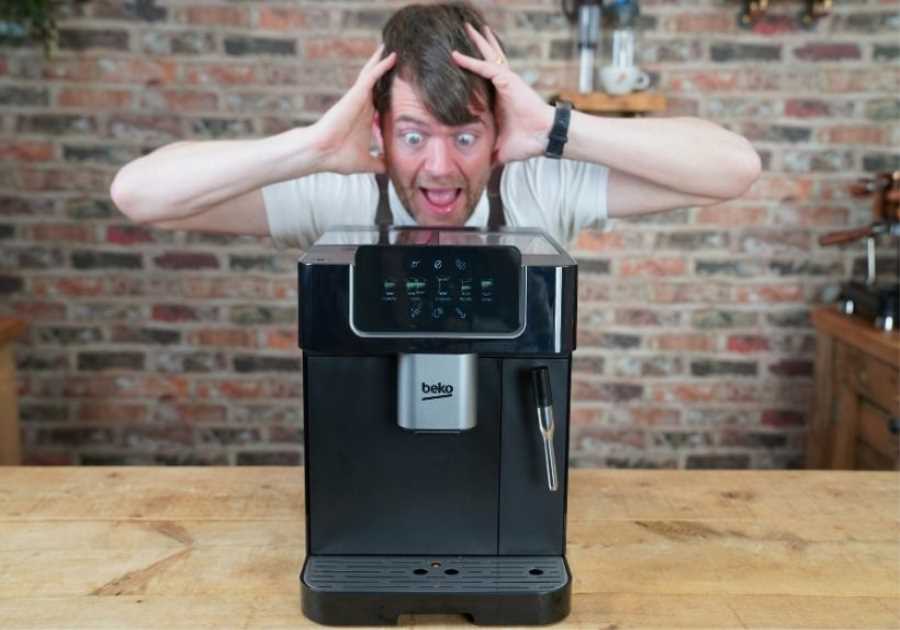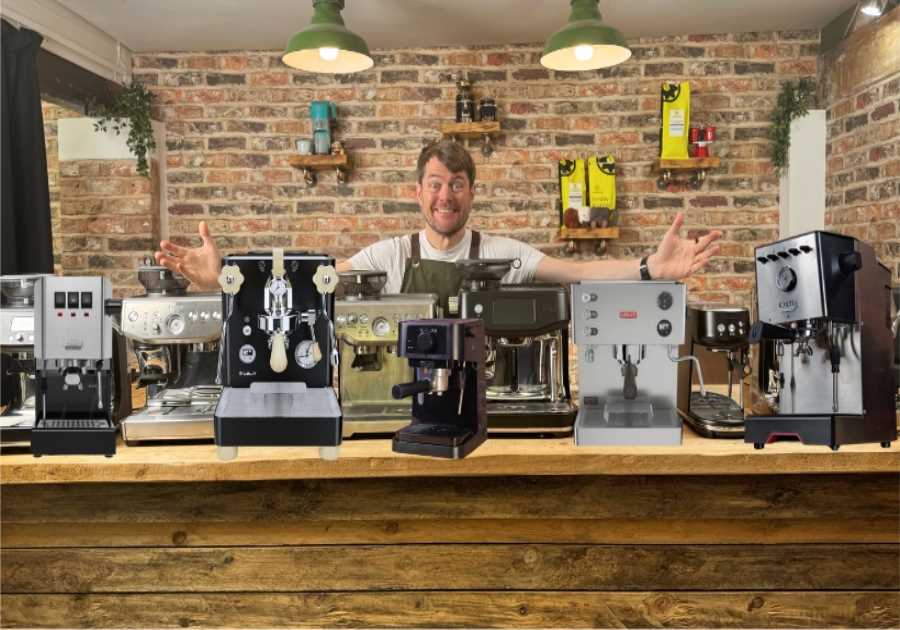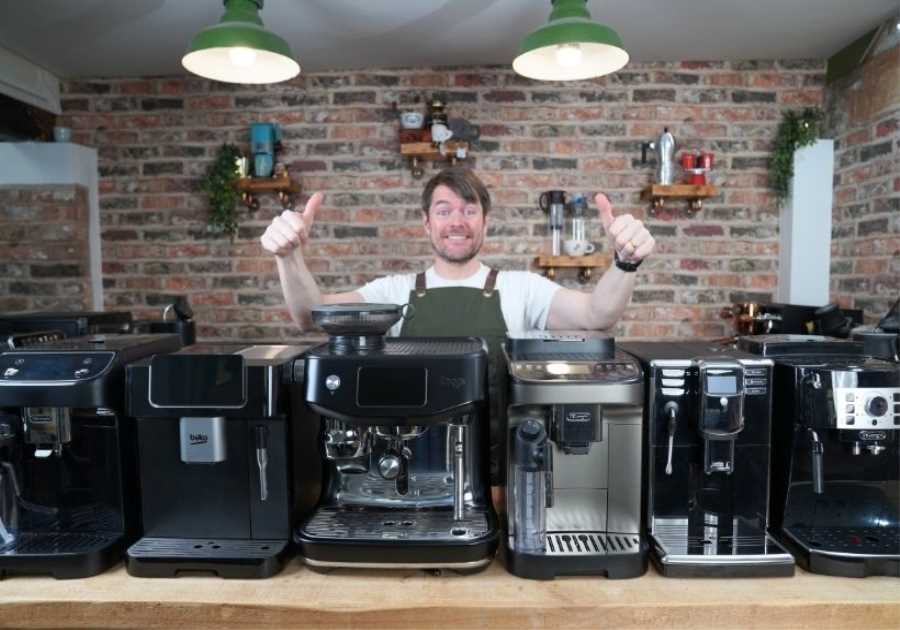There has never been as much of a focus on improving espresso extraction as there is today. Thanks to the growth of specialty coffee, more and more cafés and roasters are finding new ways to get the best results from their coffee. This can range from grinding coffee from frozen to using different distribution techniques during puck prep.
Ultimately, for customers to experience the full spectrum of a coffee’s flavours and aromas, baristas need to optimise extraction as much as possible. In order for baristas to be able to do this accurately and reliably, they need to have a solid understanding of various extraction variables. What’s more, they need to know how to best tweak them.
Here is where technology comes into play. By analysing real-time data and using software to control extraction variables, baristas can improve how they dial in and pull more consistent shots.
To learn more about these technologies, I spoke to Andy Benedikter, Commercial Programme Manager at Cropster. Read on for more of his insight.
You may also like our article on using software and data to improve performance in coffee shops.

Why is it important to record and analyse data about espresso extraction?
First and foremost, one of the biggest reasons to record and analyse data on espresso extraction is to improve beverage quality and consistency.
Most baristas working in specialty coffee shops and roasters receive months of formal training. Naturally, however, there is still the potential for human error during puck prep and extraction. Naturally, this means coffee quality can unintentionally slip.
“Coffee shops and roasters put a lot of effort into training baristas and developing recipes to deliver the best possible experience for customers,” Andy says. “Many of them also buy expensive equipment that needs to be operated and maintained to a high standard, as well as buying high-quality coffees and building good relationships with producers.”
However, despite all these efforts to maintain coffee quality, this can all come undone at the point of service if espresso isn’t properly extracted.
“Wholesale roasters who supply roasted coffee – as well as recipes, training, and even equipment – to their customers have even less control over the final cup quality,” he adds.
Without access to quantitative data on coffee extraction, baristas may struggle to dial in espresso to get the best results. Some of these data points include:
- Dose
- Yield
- Total extraction time
- Brew temperature
- Water flow rate
- Pressure profile
- Pre-infusion stage
“Recording extraction data allows coffee shops and their suppliers to find the best recipes more quickly and monitor extraction variables more consistently,” Andy explains. “They can also track machine usage more accurately to know when espresso machines need to be serviced. And they can also know when to check in with wholesale clients who need support.”

Using technology to record and analyse extraction data
Before they had access to the range of software and data platforms available on the market, many baristas had to either write down or manually add extraction data to their own systems. This could often lead to inconsistent data recording, and was also particularly time-consuming.
Moreover, baristas have to manage a number of extraction variables. This gives them many data points to work with to improve coffee quality. Recording and analysing all of this data is a challenge in itself. Ultimately, this is why more and more coffee shops and roasters are relying on technology to do it for them.
Andy explains that this is especially important for coffee businesses who operate more than one location.
“For roasters and coffee shops, being able to rely on espresso extraction data across all locations is essential,” he says. “When this data is also recorded and analysed alongside information about roast profiles, espresso machines, and baristas who are using the machines, it greatly reduces the need for the business owner to collect the information themselves.
“Instead, baristas and roasters can focus on interactions with customers and establishing brewing best practices based on the data recorded,” he adds. “In essence, they can focus on things that make bar workflow much easier, and the customer experience more enjoyable.”
Which solutions can coffee shops and roasters use?
There are several data systems and platforms available to coffee shops and roasters. But, not all of them function in a similar way. Ideally, data recording technologies need to be integrated into espresso machines to get the best results.
“Cropster’s BrewBeacon is an integrated IoT (Internet of Things) device that records extraction time and water flow rate data with every shot pulled on an espresso machine,” Andy explains. “The software then generates reports in Cropster Café. This software is designed for coffee businesses who operate their own stores or sell coffee to other businesses.”
Andy explains that the device connects to flow meters and solenoid valves on volumetric espresso machines to capture data. The BrewBeacon can also be connected up to four groupheads at a time. Once recorded, the data is organised by several categories, including location, machine, recipe, grouphead, and time.
Ultimately, efficiently storing this information and making it accessible helps baristas to reliably and accurately analyse espresso extraction data. In turn, this means that baristas and roasters will get the best results from their coffee.

What are the benefits of recording and analysing espresso extraction data?
With the specialty coffee sector’s growing focus on improving coffee quality, recording and evaluating extraction data has never been more crucial.
Firstly, and perhaps most importantly, storing and analysing a number of data points on espresso extraction allows you to optimise brewing variables. In turn, you can achieve the best results from each shot pulled, and improve the consumer experience.
“Without access to reliable data, you can only rely on training, quality equipment, and brew recipes,” Andy tells me. “However, recording and analysing extraction data makes these variables more measurable.”
Maintenance is also an important consideration. Relying on integrated espresso machine technologies and software to record data means that coffee shop owners and roasters will have a better understanding of when they need to service their machines.
“With these technologies, it’s easy to spot inconsistencies in data and identify the potential causes,” Andy explains. “You can understand more about machine performance across different locations and machine usage levels. These insights can better support daily operations and ensure the longevity of your equipment.
“Machine technicians also benefit from this data as they can provide better quality service,” he adds. “In line with this, Cropster is adding more and more espresso machine service partners to our support network who can easily install BrewBeacons in their machines.”
Optimising workflow
Baristas, coffee shop owners, and roasters have a seemingly endless number of tasks to focus on every day.
“Our customers tell us how much time they spend visiting their different locations and/or wholesale clients, holding staff meetings, fine tuning brew recipes, sampling coffees, and training,” Andy explains.
When they use technology and platforms to monitor espresso extraction, they can then free up more time to focus on other areas of their business. These include:
- Customer interaction
- Product and menu development
- Managing wholesale clients
- Stock management and rotation
Andy adds that Cropster’s eCommerce solution can also be another way for coffee business owners to streamline other operations. Alongside data recording and analysing solutions like BrewBeacon – which officially launched at the 2023 Specialty Coffee Expo and is now available to use with a range of different espresso machines – platforms like this can be a useful resource to streamline operations.
Continuous improvement
Moreover, with the right level of support, integrated data systems have the ability to continuously update, and therefore improve, their performance.
“We want to ensure that BrewBeacon transmits accurate data at all times,” Andy says. “This allows us to better engage with users and understand more about their experiences with the device, the data it captures and analyses, and how we can make their lives easier.”

In specialty coffee, consistency is key. Whether it’s the quality of every espresso shot served or providing excellent service to customers, coffee shops need to make sure they are getting it right time and time again.
This means that data is important – and recording it accurately for espresso extraction is a good place to start. Having access to this data only serves to improve coffee quality. In the long run, it can give baristas and roasters more time to focus on other tasks.
Enjoyed this? Then read our article on implementing software at your coffee roastery.
Photo credits: Vincent Forstenlechner
Perfect Daily Grind
Please note: Cropster is a sponsor of Perfect Daily Grind.
Want to read more articles like this? Sign up for our newsletter!
The post How can data be used to improve espresso extraction? appeared first on Perfect Daily Grind.
By: Melina DevoneyTitle: How can data be used to improve espresso extraction?
Sourced From: perfectdailygrind.com/2023/05/data-improve-espresso-extraction/
Published Date: Tue, 30 May 2023 05:25:00 +0000






